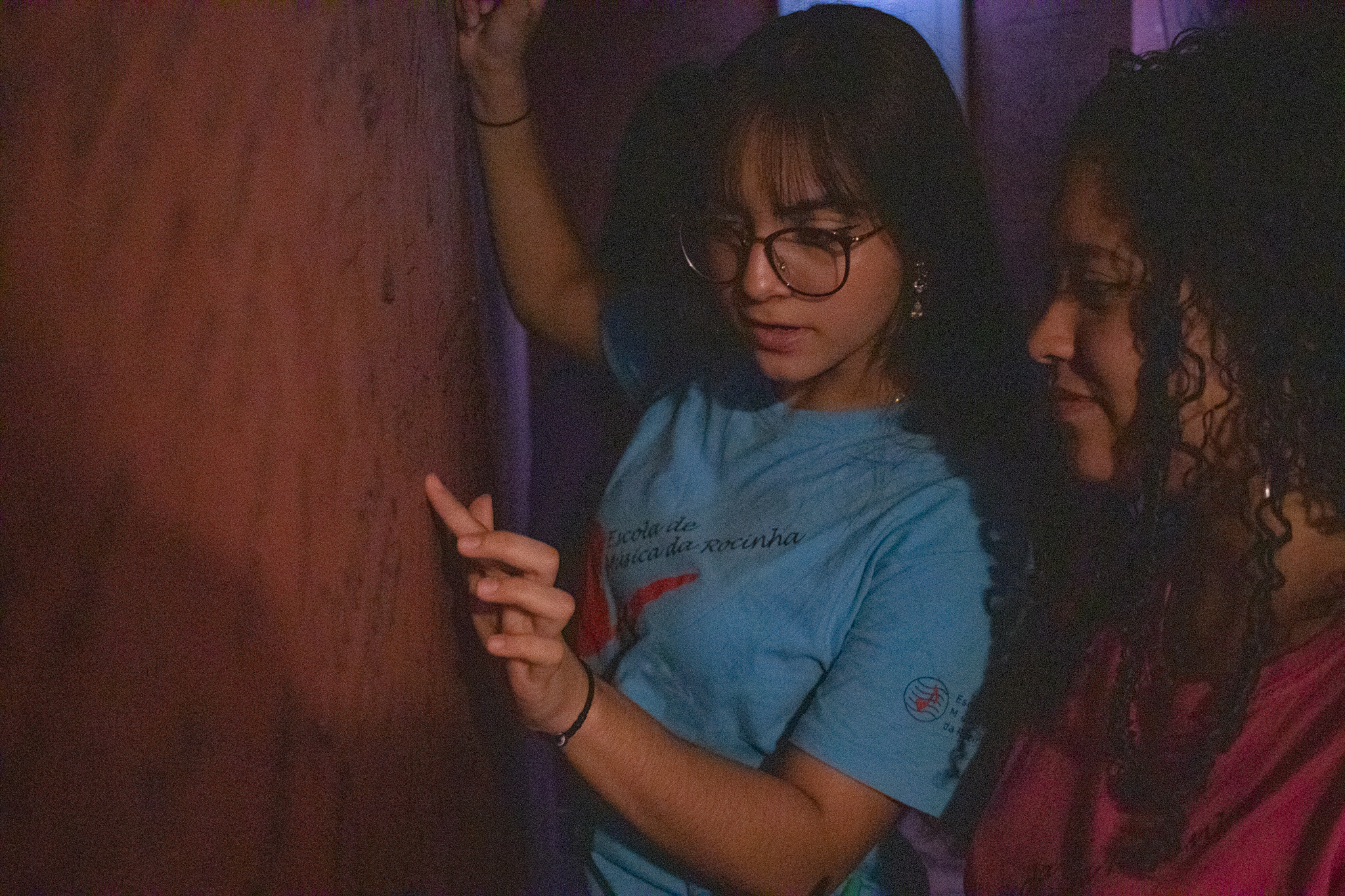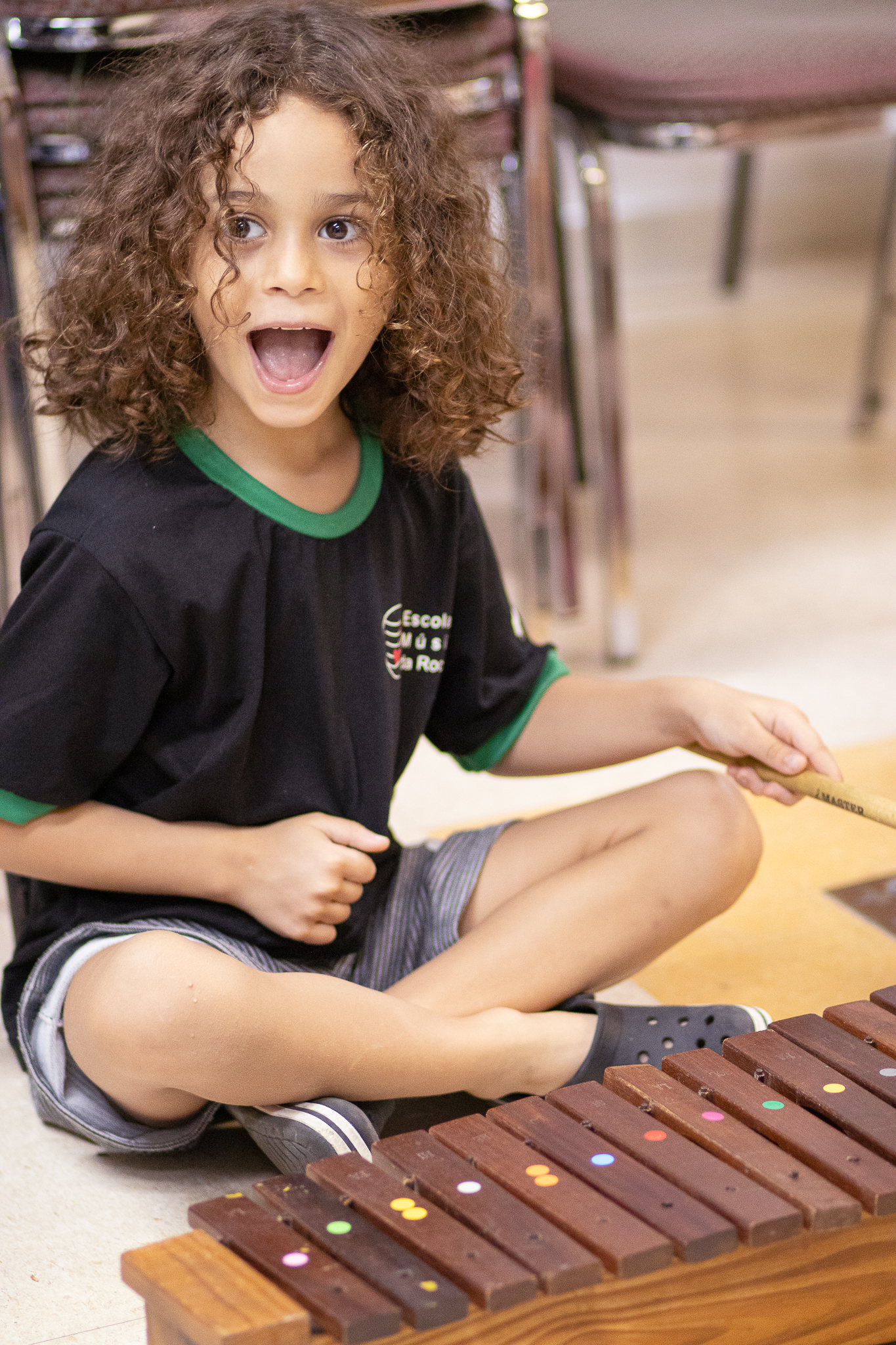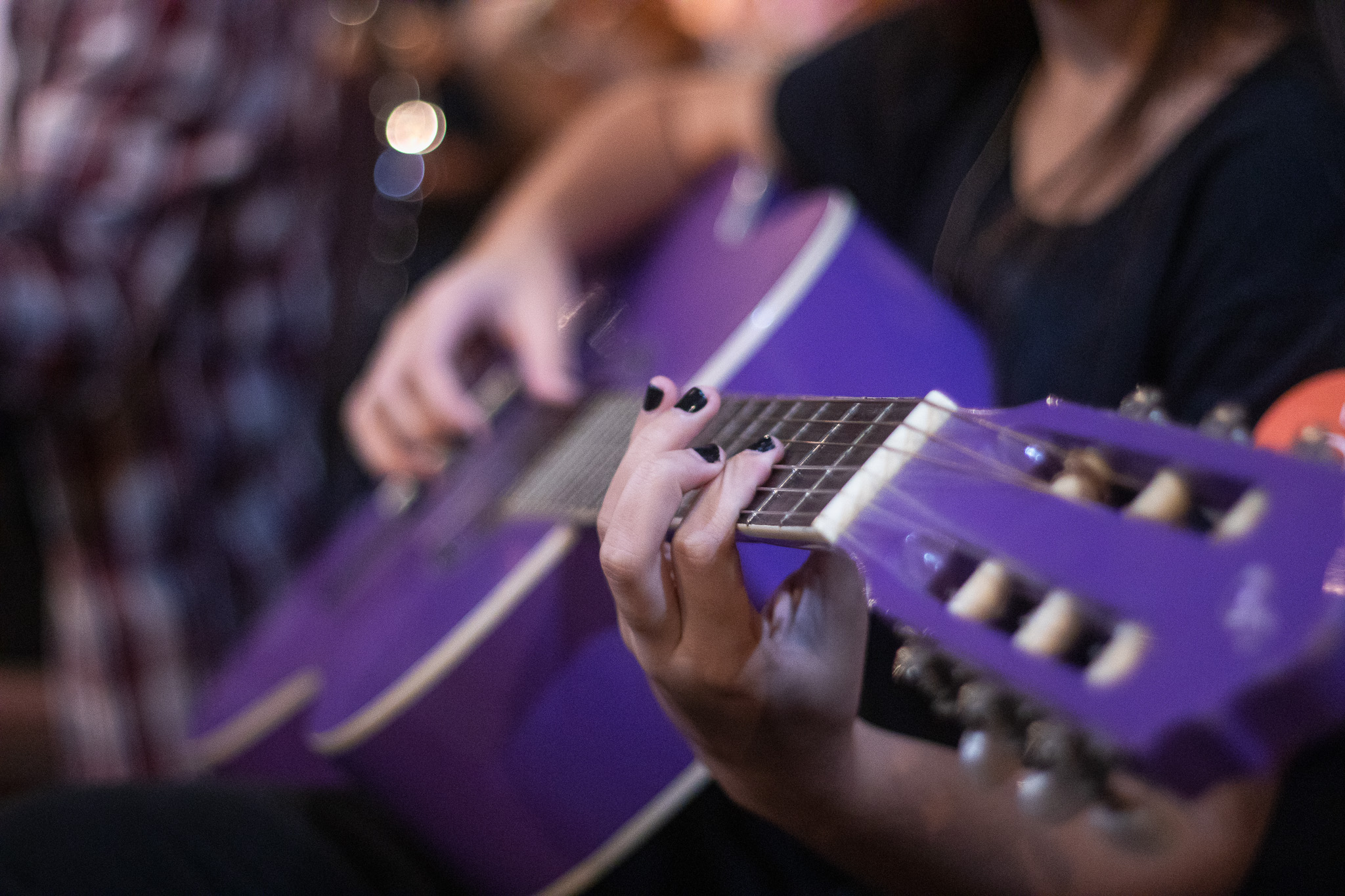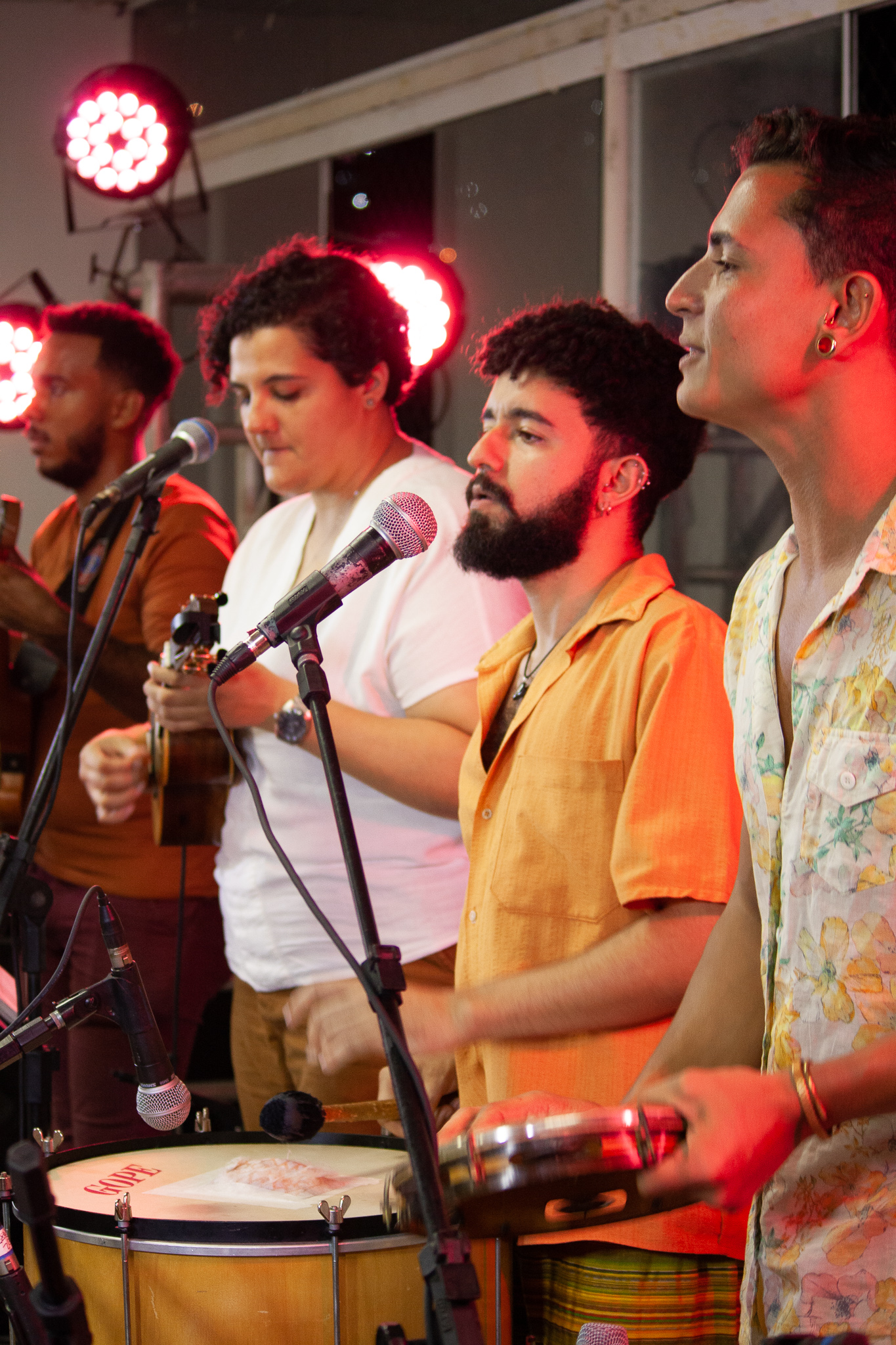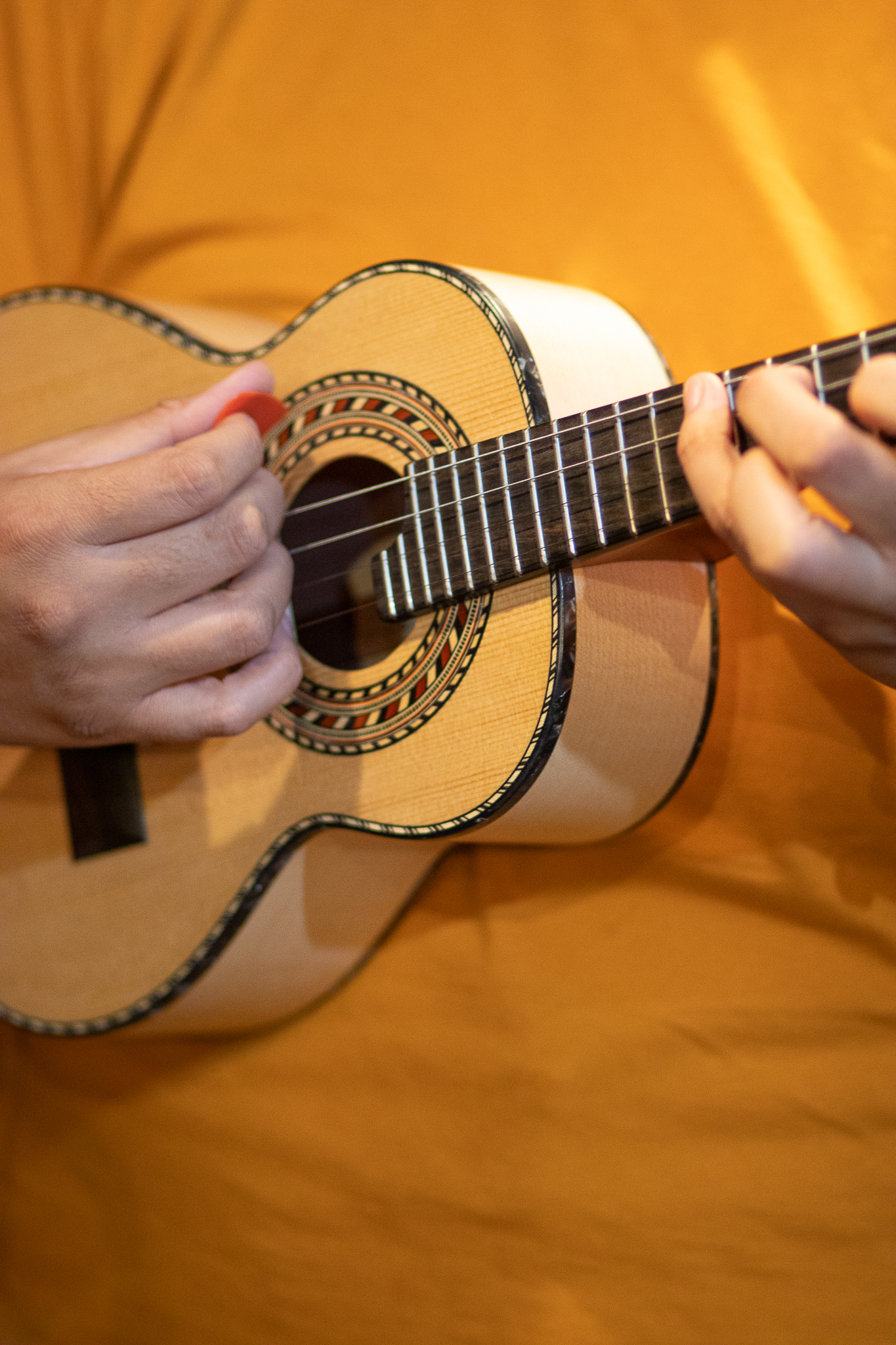Musical content is covered in all its variety and depth.
And always adapted to the effective development possibilities of each student or group involved.
The idea is that favorable conditions and respect for the response time to proposed stimuli facilitate learning and prevent evasion.
EMR’s pedagogical proposal has four lines of action:
♬ Musicalization
♬ Technical and theoretical development
♬ Ensemble practice
♬ Support for professional training
Musicalization
Here the objective is to raise awareness of music: both the agent of music making and the listener. A process that also develops cognitive, social and psychomotor skills.
Musicalization works as a kind of prelude to entry into other courses offered by the school.
Handling sound materials, singing, listening to new repertoires, using the body as a sound and expressive element, creation and first contacts with conventional instrumental practice are the activities that, playfully, enable people to listen to and make music.
This strategy was also applied in community daycare centers in Rocinha and with groups served by the Child Labor Eradication Program (PETI), institutional partnerships related to guaranteeing children's rights.
Technical and Theoretical Development
In this line are in-depth courses for technical and theoretical improvement. Guitar, cavaquinho, piano/keyboard, percussion and recorder; flute, clarinet, trombone, trumpet and horn; violin, viola, cello and double bass and harp on the instruments.
More theory and perception, choral singing, introduction to sheet music publishing programs and others that can be done occasionally.
The strategy is to respect the individualities and time of each student. Therefore, the courses do not have linear cycles (semester or annual).
The student can change classes at any time, based on the teachers' assessment, to more or less advanced classes, with care taken to ensure their adaptation
to the new environment. Neither pass, fail nor levels exist.
The objective is technical and theoretical improvement and the production of a repertoire that supports the content, using the score from the initial phase.
Ensemble Practice
The structuring of Ensemble Practice as a line of action goes beyond the pedagogical resource. It creates an environment for collective repertoire production and requires greater readiness for high performance.
It is the form that comes closest to the music listener's experiences because it improves the musical ear.
Develops instrumental practice and singing skills and the ability to work as a team.
Participants are high school and advanced level students nominated by teachers and will have an additional workload for rehearsals with a view to public presentations.
Some groups formed that stood out: Ensemble of Recorders, Orchestra of Winds and Plucked Strings, String Quartet, 5Pi, Guitar Camerata, Rocinha Chamber Orchestra, Sopros do Morro and Som das Vielas.
Two groups achieved a high level of performance and began to perform professionally: BanDaCapo and Chorando à Toa.
Support for Professional Training
EMR seeks the highest level for its students, both in technical, theoretical and performance development, as well as in music education skills.
It also acts as a mediator, in two aspects, in the relationship between students and the job market.
In the first of them, through participation in musical groups formed in Ensemble Practice courses, when a group reaches a recognized level of performance, it attracts audiences and can offer to be hired on the cultural scene.
On the other side, there is paid monitoring work at the school itself, under the supervision of teachers.
Here there is an opportunity to begin teaching and an academic career – which has already happened to dozens of students in our history.
Although this is not our main line of action, it is where the results appear more visibly because they have a more immediate impact on the observer's vision.


